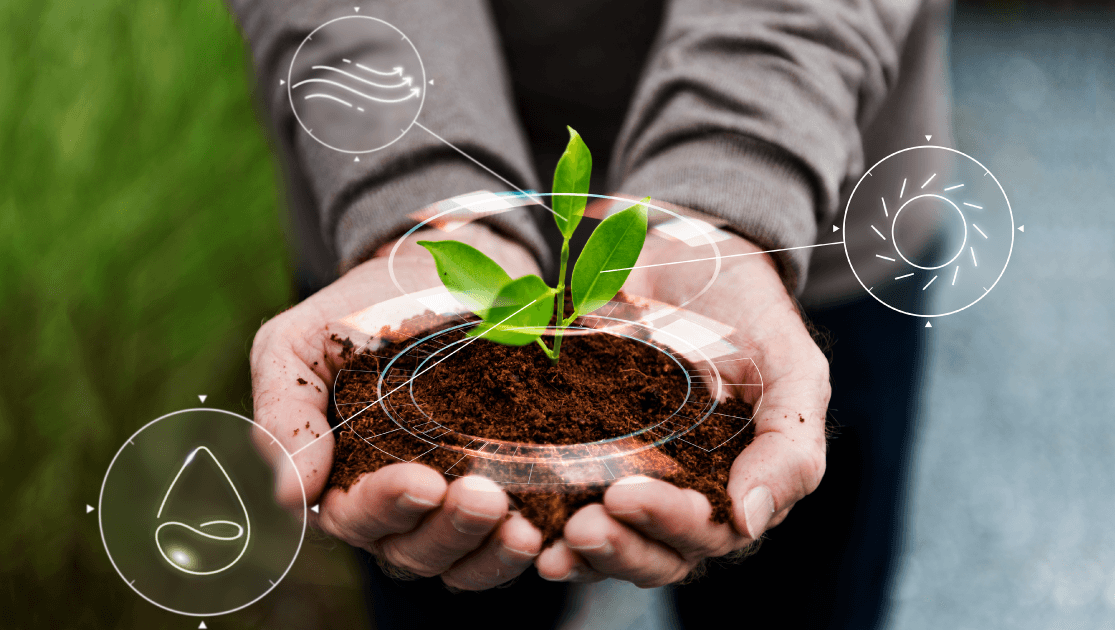Rafael Fagundes
Diretor de Estratégia
Technology Applied to Agribusiness: For Small and Medium-Sized Producers.
4 min read


Published at
Updated at
When we think about technology in general, our minds are automatically drawn to computers, smartphones, electronic devices, or any other external tools that use electricity. Well, indeed, these devices are included in this category, but they are far from being the only things.
If we were to ask who created the technology that created technology, we would obviously enter an infinite loop that would surely take us back to the most ancient times of human existence. Yet, we would still wonder who created the technology that created the humans who created human technologies, delving into cosmogonic and anthropogenic debates that are not within the scope of this article. However, let's stick with the term "technology" in a broader sense for better understanding.
The central point here is that the greatest technology is human creativity itself, to create solutions to various problems, improve, reduce costs, or evolve what already exists. However, before that, it is necessary to identify what needs to be done so that we can choose the best tools (often called technologies) to develop them.
In this line of thinking, we ask questions like "What if?" to create fictitious scenarios to do things differently or create what does not exist. In agribusiness, considering that it encompasses very distinct markets within the same sector, taking into account niches, sizes, seasonality, and other characteristics, we can ask some fundamental questions, for example:
- "What if I knew the price trends of each product my area produces before planting?"
- "What if I had a tool that could compose crop percentages to make the area more profitable?"
- "What if we had all the sales prices for micro-regions in each rural union integrated?"
- "What if I knew that the selling prices of the products I produce are very attractive a few kilometers away from where I usually deliver?"
- "What if I could determine the real costs of everything I produce and sell and compare this performance with the market to know if we are actually doing well or poorly and how to improve?"
- "Is the corn I produce better used for animal feed, for sale, or both in a different mix? What would be the ideal proportion?"
- "What if I received all available financing options from financial institutions on my phone and could simulate them on my phone?"
- "What if I could make simulations and hire all insurance policies without leaving the property?"
The list of possibilities is endless, and that's where each person's pain points and creativity come into play. Obviously, some of these questions are already solved as the producer advances, and information management is well stocked, including fully automated harvesters and drones operating via geoprocessing. But what about small and medium-sized producers who are often family-run and rarely leave their properties due to the high workload? This is an area where there is not much information available for decision-making, even though the type of production has full knowledge of what to do and when to do it.
However, when it comes to the internal aspects of the property and transportation, not necessarily in the broader market sense, information, systems, applications, methods, and knowledge cost time and money.

But here are some fundamental questions:
- Are we aware of the opportunities we are missing without having information?
- Are we operating at the maximum potential of our property?
- Do I really know the costs of everything I do to establish prices with confidence?
- Am I planting the most suitable crops in terms of price and performance on the property?
- Am I selling in the best place and at the right time?
- Can I invest a little and improve my results by reducing costs, getting better selling prices, and maybe with less effort?
Well, there's no magic in the answers, but there is a need for reflection that Agribusiness is a business, and every business requires continuous improvement to survive, even though there is the producer's passion for what they do.
This is where the beauty of software comes in because it provides complete freedom for the mind to create what is needed to solve problems at the information level, and it is not necessarily necessary to choose what already exists like any physical production line tool.
In this way, we see that there is a field of possibilities for developing simple and effective solutions for this market, whether for some of the topics already mentioned or for others that may not even come to mind but that only the producer can think of. The purpose of Plathanus is available to contribute to any solution that can be conceived and to deliver the best in the software development market, maintaining customer-friendly language, and taking pride in seeing new creative solutions being created because this is our business.
Special thanks to Rubens Renato Fagundes, Forest Engineer and Rural Producer, who granted me this interview on the topic and brought various pains of the sector and a lot of creativity to solve them.
Similar articles you might be interested in
Pascoal Vernieri
Published at
2 min read
Pascoal Vernieri
Published at
2 min read
Tatiane Rocha
Published at
3 min read